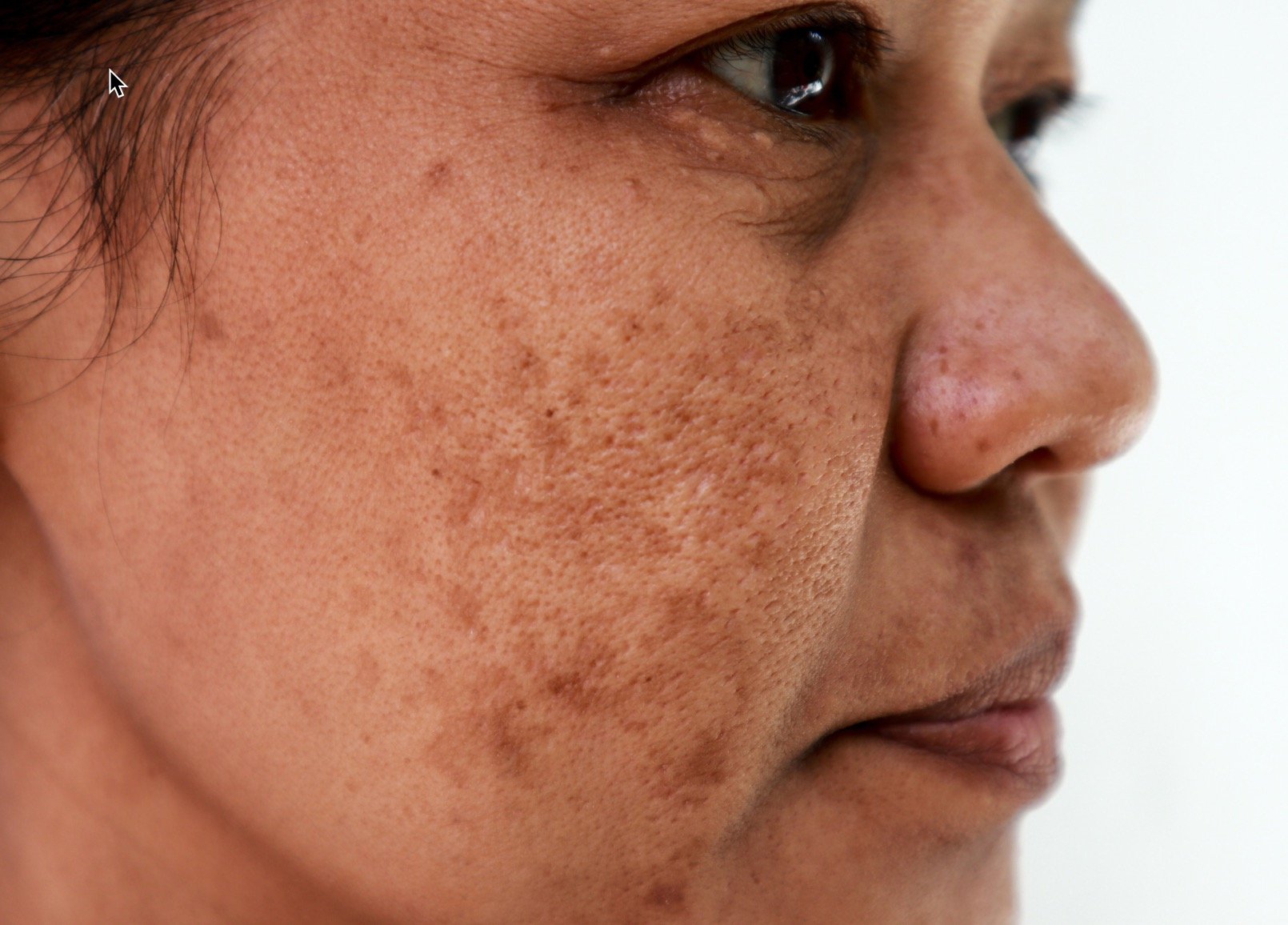Melasma
WHAT IS melasma?
Melasma is a blotchy brown darkening of the skin on the face. It is usually symmetric (happens on both sides of the face). Some call melasma the “mask of pregnancy” because it tends to occur during or after pregnancy. It is much more common in females. It doesn’t itch or hurt, but most people with it do not like how it looks.
WHY DO I HAVE melasma?
There is definitely a genetic component to melasma because it runs in families. Shifts in hormones are a common cause, either becoming pregnant or starting birth control pills or an IUD. It gets darker in sunlight, so it is more common and noticeable in the summer. Some people with thyroid issues can develop melasma.
HOW DO I FIX melasma?
Melasma is hard to treat because the sun is hard to avoid. If you are not religious about sun protection during the day, then it is not worthwhile to do melasma treatments at night (see my pages on sun-protective clothing and sunscreen for skin of color).
A combination prescription cream exists for melasma, but you can combine similar (less potent) over-the-counter options:
BEDTIME ROUTINE:
Rinse your face with a gentle facial cleanser. Then apply a very thin layer of each of the following to your face:
Glycolic acid or kojic acid serum or Mela B3 serum
Hydrocortisone ointment (the first two irritate the skin, so hydrocortisone helps prevent the irritation)
WARNING: Overuse of topical steroids like hydrocortisone can cause skin thinning, stretch marks, and easy bleeding or bruising.
(Can also add niacinamide serum if you are tolerating the above combination. It would go on right after the acid serum.)
Cover this with a thick layer of Vaseline or CeraVe cream.
MORNING ROUTINE:
Rinse face with gentle facial cleanser (hydrating or foaming)
Apply a thin layer of The Ordinary azelaic acid 10% suspension or azelaic acid cream or Mela B3 serum to your entire face.
Apply a daily facial moisturizer with sunscreen (SPF 30 or more).
Moisturize as needed with CeraVe cream or Vaseline throughout the day
At bedtime, dab the adapalene gel on the outside of your face (forehead, sideburns, chin). Massage it into the outside of your face first. Then, with the tiny bit left on your fingers, massage it over and around the nose, cheeks, and lips (these are more sensitive areas to peeling and redness).
NOTE: This will dry you out. It dries everyone out! The goal is to minimize the red and flaky skin until your skin gets used to the adapalene after a few weeks.
WARNING: Adapalene gel should not be used if you are pregnant. It is a retinoid, and retinoids can cause problems to growing babies in the womb.
Right after the adapalene gel goes on, apply a lot of moisturizing cream or ointment. My favorites are CeraVe cream, Vanicream cream, or Vaseline (#SlugLife). Put a thicker layer on your skin and go to bed shiny. It will soak into your skin while you sleep.
NOTE: It can take months to see results, so you have to stick with it for months! Take a selfie before starting so you can compare results over time. It is hard to see day-to-day changes in the mirror. As a side benefit, adapalene is in the retinoid family, which are the best anti-aging ingredients.
WHAT IF MY melasma ISN’T GETTING BETTER?
Usually, the steps above can help most people get their melasma better. It is better to start treating melasma in the winter when the sun is less intense. In 2020, the FDA pulled hydroquinone (a bleaching cream) off of the market over-the-counter, because overuse can cause permanent dark spots (ochronosis). If over-the-counter options are not working, look for a board-certified dermatologist in your area. They can prescribe a stronger combination prescription cream with hydroquinone. If you are in or near Utah, see one of my excellent colleagues at the University of Utah or me virtually with Honeydew.
DISCLAIMER
The statements expressed and content of this website are not intended to be a substitute for professional medical advice. Readers should seek their own professional counsel for any medical condition or before starting or altering any treatment, exercise, or dietary plan. Please see our full disclaimer here.

